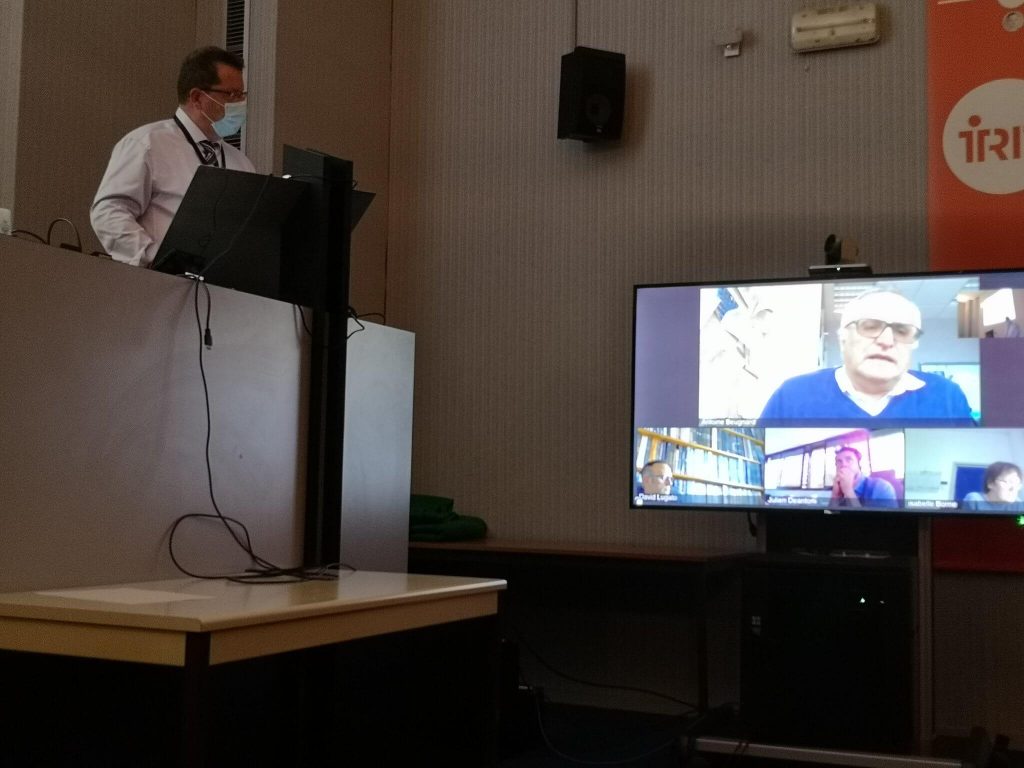
On the 1st october 2020, Renan Leroux defended his thesis. Awarded by Toulouse III – Paul Sabatier University, his work was realized at IRIT laboratories and IRT Saint Exupéry, under the supervision of EDMITT doctoral school.
The high quality and the relevance of Renan’s thesis contributed to get significant results as a part of Moise project.
THESIS SUBJECT
“Simulation system design methodology in Extended Enterprise, based on model-driven system engineering”
About this thesis
This manuscript presents a methodology for the design of “early” simulations in extended enterprise, based on model-driven system engineering. The goal is to allow the system architect to explore alternative solutions, and to verify and/or validate the system architecture being designed, in relation to the user requirements. This methodology is divided into two complementary axes: the method part (new) and the means of execution, without which there can be no simulation. This new method is based on the following principle: starting from the user requirements to create the system architecture model, then derive the simulation architecture, develop the executable models and run the simulation in relation to objectives of verification and/or validation. By doing this, potential differences in interpretations between the system architecture model and simulation models are removed or at least reduced compared to a traditional approach. This method is of matrix type. The columns represent the actors, while the lines correspond to the different steps of the MBSE method used by the system architect for the product, including the refinement steps. The actors are the system architect for the product (SyA), a first new actor introduced by this method: the system architect for the simulation (SiA), the developers of the simulation executable models (SMD), and the second new actor in charge of the execution of the simulation (SEM). The analysis of its qualities and the production of results exploitable by the system architect for the product. As the method relies on a matrix structure, the SyA can request simulations, either in depth to specify a particular point of its model, or more in extension to check the good agreement of the functions between them. With this new matrix approach, the system architect for the product can reuse functions already defined during the upstream or downstream stages of its previous decompositions. Overall, saving time, costs, and confidence. The second axis of this methodology is the realization of an extended enterprise cosimulation (EE) platform, which is a project in itself. Based on a proposal of requirements specifications, the MBSE has defined a functional and physical architecture. The architecture of this platform can be modified according to the simulation needs expressed by the architect of the simulation. This is one of his prerogatives. The proposal introduces a third new player: the Infrastructure Project Manager (\ac{IPM}) which is in charge of coordinating for the realization of the cosimulation platform, within his company. For an EE of federated type, that is to say from contractor to subcontractor, introduction of two new actors: – the supervisor of IPM, whose role is to link IPMs to solve the administrative and interconnection problems, – the person responsible in charge of the execution simulations. He coordinates, with the SEM of each partner, the implementation of simulations, ensures launches, and returns the results to all partners.
MOISE PROJECT
The MOISE project aims to study the progressive introduction of inter-operable formalisation techniques concerning requirements and system architecture, as early as possible and throughout the development cycle.This concerns specification activities, including during interactions between the actors of the extended enterprise, but also for the definition, verification, analysis and evaluation of the functional and physical architecture, all this in a regulatory context (certification in particular…).
JURY
| Jean-Michel BRUEL | Thesis Director | Professor / IRIT, Université Toulouse Jean Jaurès |
| Ileana OBER | Thesis Co-Director | Professor / IRIT, Université Toulouse-UT3 |
| Marc PANTEL | PhD Advisor | Professor / IRIT, ENSEEIHT |
| Antoine BEUGNARD | Rapporter | Professor / IMT Atlantique |
| Julien DEANTONI | Rapporter | Professor / INRIA, Université Côte d’Azur |
| Isabelle BORNE | Examiner | Professor / IRISA, Université Bretagne Sud |
| Claude BARON | Examiner | Professor / LASS-CNRS, INSA |
| David LUGATO | Examiner | Professor / CEA CESTA Bordeaux |
PUBLICATIONS
- Mode-ling Co-simulation : A First Experiment – R. Leroux, M. Pantel, I.Oberet JM. Bruel In :Proceedings of MODELS-2017, Satellite Event : Workshops (sept. 2017)
- CPS simulation models categories in Extended Enterprise – R. Leroux, M. Pantel, I.Oberet JM. Bruel – In :Proceeding of GE-MOC workshop at the ACM/IEEE MODELS conference(2018)
- Model-Based Systems Engineering for Systems Simulation – R. Leroux, M. Pantel, I.Oberet JM. Bruel – In :SymposiumOn Leveraging Applications of Formal Methods, Verification and Validation(ISoLA 2018).

